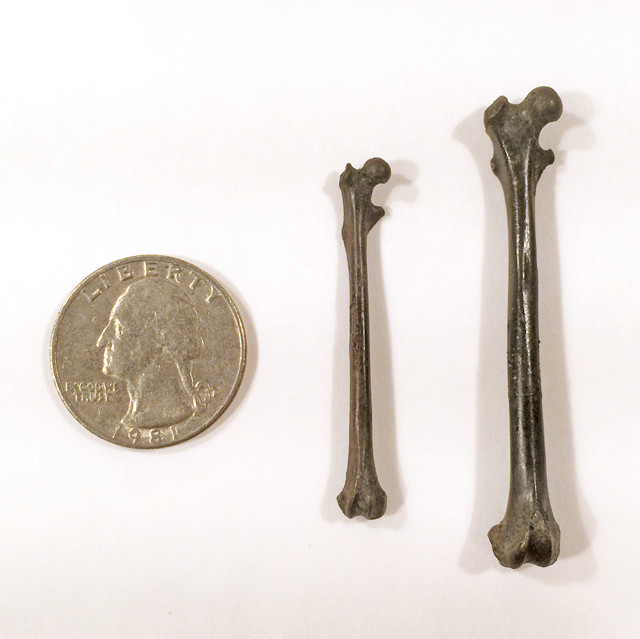
by Kate S. Zalzal Tuesday, November 15, 2016

Fossilized femur bones from early primates found in a coal mine in Gujarat, India. Credit: Johns Hopkins Medicine .
Bones of an ancient rat-sized, tree-dwelling primate have recently been discovered in a coal mine in Gujarat, India, and may represent the most primitive known remnants of the divergence between the two great primate clades.
Primates today are divided into two groups: strepsirrhines, which include lemurs, lorises and galagos, and haplorhines, which include monkeys, apes and humans. But the Gujarat primates have few specializations in their bones, making it difficult to put them into one group or the other, says Rachel Dunn, assistant professor of anatomy at Des Moines University and lead author of a new study in the Journal of Human Evolution.
This suggests that the fossils represent an early stage of evolution for the little primates, she says. However, the age of these primates is puzzling.
At 54.5 million years old, some of the Gujarat primates are younger than primate fossils from Europe and Asia that show more specialized features. The most likely scenario, the researchers say, is that primitive primates arrived in what is now India and retained their generalized skeleton, while their relatives on the northern continents continued to evolve.
In the Early Eocene, when mammals were dispersing, India was an island continent that had not yet collided with Asia. “Primates could have migrated from India to the northern continents or vice versa, and we don’t know how that migration occurred, but the primates, together with other mammals found [at the mine], suggest that it did occur,” Dunn says.
The mine has since been infilled, but Dunn wants to get back to other mines in India. “It’s likely that there was more diversity in the primate and mammal community than we have currently sampled,” she says. “That’s why fieldwork is so exciting. You never know what you will find.”
© 2008-2021. All rights reserved. Any copying, redistribution or retransmission of any of the contents of this service without the expressed written permission of the American Geosciences Institute is expressly prohibited. Click here for all copyright requests.